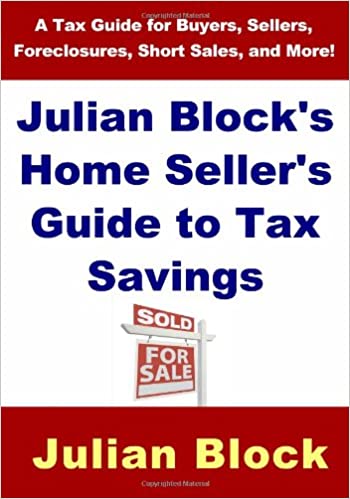Originally published on Forbes.com.
I didn’t expect to learn anything from reading Julian Block’s The Home Seller’s Guide To Tax Savings. I’m kind of arrogant that way relying on primary sources, but I picked up some important points that had passed me by. The book packs a lot of important information into less than 100 pages. I think that if I had a real estate office, I would be negotiating with Julian to buy copies in bulk to hand to potential clients as a marketing tool. There is something in the promotional piece on the book that trouble me just a bit.
The book discusses law changes that completely altered the way taxes are figured on profits and losses from sales of personal residences. But many owners of houses, condos or co-op apartments, even if they own multi-million-dollar dwellings, misunderstand—or worse, are totally unaware—of those changes. In this situation, ignorance isn’t bliss; it could be disastrous.
The big change that Julian emphasizes happened in 1997.
How It Was In Olden Days
Back in the previous millennium, there were two forms of relief from tax on the gain on the sale of a principal residence. You could defer gain by buying a replacement residence and there was once in a lifetime exclusion that you could use when you were over 55. Probably with the help and encouragement of realtors, it was deeply ingrained in people’s minds that as they moved from one part of the country to another it was mandatory to trade up, since gain would be recognized to the extent that proceeds of sale were not reinvested. So people with huge gains on small house in a hot real estate markets would feel obligated to buy enormous houses when they relocated to pokier areas. The were thereby violating Reilly’s Second Law Of Tax Planning – Sometime’s it’s better to just pay the taxes, but that was then.
When I talked to Julian about these changes being old news (I mean really babies born at the same time as the bill making the changes was signed are starting college next month), he told me that actually the trading up notion was so well absorbed that a lot of people have not gotten the word that it changed during the Clinton administration. I think he is right about that.
It’s Complicated
Of course the $250,000 ($500,000 for married couples) exclusion for principal residence gain has a lot of wrinkles that complicate it. Julian does a great job of discussing the two out of five years of ownership and use, which don’t have to coincide and what happens in the case of divorce and death. Remember Reilly’s Third Law of Tax Planning – Any clever idea that pops into your head probably has a corresponding rule that makes it not work. It is that way with the exclusion, but Julian guides you through the traps pretty well.
One change that passed me by in 2008 is the special rule for property that has not been always used as a principal residence. Non-qualified use after 2008 will cause some of the gain to not be eligible for exclusion. It is a subtle shift that can affect planning. As the years go by the change will become more significant since it is only non-qualified use after 2008 that hurts. I was really annoyed with myself for having missed that. I asked my covivant, who is a much better 1040 preparer than I, if she was aware of it. It had passed her by too.
There’s More
Of course planning for the exclusion is not the only issue. There is the matter of actually determining your gain. Julian provides a lot of advice on that including some that would be good to follow well before you are thinking of selling. This was where I picked up another tip, that had never occurred to me. Owners of condominiums and cooperative apartments should be sure to include capital assessments that that they have paid over the years to their basis when they compute gain on sale. Then there is the stuff on divorce, estates and, don’t get me started, community property.
I think that most readers will find that Julian makes some fairly complicated matters accessible to readers. I would say that this book borders on a must read for realtors and attorneys who handle a lot of home sales and homeowners who prepare their own returns. A hard copy can be ordered from Julian’s site and it is also available on Kindle. Used copies are being sold on Amazon for a small fortune, but I don’t quite get what is going on there. Better you should buy six copies direct from Julian and give them to your friends.
































































































Trackbacks/Pingbacks